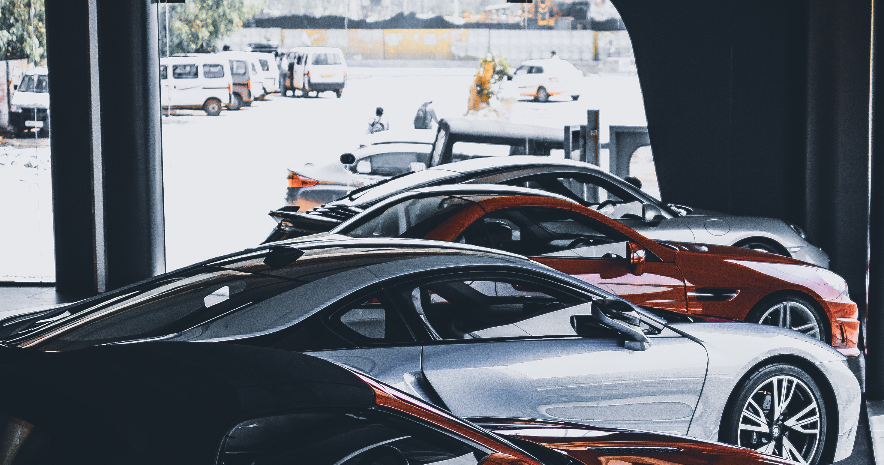“We are currently not selling any new energy vehicle models since the industry is still uncertain about it, and everyone is just watching and waiting.”
This was stated by Liu Jian, an employee at a used car dealership that has been operating in the industry for seven years.
Photon Planet has approached numerous used car salespeople across the country in the guise of purchasing a secondhand electric vehicle, and the answer was consistent: they don’t have any resources for secondhand new energy vehicles, and many have never touched one before, while some have tried but ended up losing money.
Liu Jian stated that the new energy vehicle’s recognition in the used car industry is still not high, and most dealers have not yet figured out the commercial path and are hesitant to make significant investments. Additionally, the customer acceptance rate is relatively low, making it challenging to sell.
The coldness of the secondhand new energy vehicle market contrasts with the high demand for new cars.
Used Car Dealers in Watchful Wait
New energy vehicles seem to have invaded the traditional fossil fuel vehicle territory and are spreading like wildfire.
Since 2016, the market size of new energy vehicles in China has been steadily growing, with more and more users choosing them, and more people joining the new energy vehicle creation forces. Now traditional car companies, new vehicle forces, and cross-domain players such as mobile phone manufacturers and real estate companies are competing in the new energy vehicle market.

In 2021, domestic new energy vehicle sales skyrocketed, reaching a record high in production and sales. According to public data, the market share of new energy vehicles reached 20% in November 2021, and it is expected that the penetration rate of new energy vehicles in 2022 may continue to rise to 23%. The new energy vehicle market has begun to shift from policy-driven to market-driven.
Although new car sales are increasing, the secondhand vehicle market has not shown a parallel trend, and more used car dealers remain in a watchful state.
Wei Lin works in a used car dealership in Jiangsu, and his attitude towards secondhand new energy vehicles is indifferent. This is mainly due to previous losses, and they are still doing business in fossil fuel vehicles comfortably.
In the first half of this year, the company decided to develop a new energy vehicle business faced with more and more green license plates on the market. However, when they actually started, they did not perform as expected. Wei said, “At that time, the company received two Tesla cars, and they eventually lost tens of thousands of yuan before selling them.”
“New energy vehicles are not only difficult to sell but also challenging to collect, and there are not many resources available on the market. Even if we get them, it is tough to make a profit, and not losing money is considered lucky,” Wei added.
At that time, his company had a hard time finding two Teslas, and it took nearly three months to sell them. “Electric vehicles depreciate too quickly, and the longer the turnover time, the more losses we will make. Coupled with Tesla’s braking failure, it was even more challenging for us,” he sighed.
After that, they never collected new energy vehicles again.“`
Not just Tesla, the entire new energy used car industry is like this, and many people have lost money. Wei Lin said that when they actually started doing it, they discovered that electric cars and fuel cars have completely different inspection systems. We ourselves have not fully understood the structure of electric cars, so persuading customers is even more difficult. “And now the entire new energy vehicle is not so popular, it’s better to wait and see.”
Undeniably, new energy vehicles are definitely the trend of the future. Emerging things in the future are also the easiest to be sought after and interfered by external factors, thus gradually amplifying their voice in the public opinion environment. When it comes to specific industries, their popularity may be far less than what we see on the internet.
For many used car dealers, the popularity of new energy vehicles is still in its early stages, and the used car market is relatively farther from the industry end, so practitioners have relatively lower knowledge of it.
The current wait-and-see attitude of used car dealers also indicates that this industry is still new enough. There are still many problems to be solved in the new energy used car market, which hinder the influx of new energy vehicles into the used car market.
Why are used electric cars so cold?
There are several main reasons that affect the development of the new energy used car market.
First of all, the main reason is that the overall market penetration rate of electric cars is not high. In the past few years, the reason why there was a lot of noise about electric cars in the market was largely due to the guidance of policies.

In China, 8 cities including Beijing, Shanghai, and Guangzhou have adopted sales restriction measures for cars. If you want to buy a second or third car, you often have to obtain a fuel car license through a lottery or bid. In recent years, first-tier cities and emerging cities have also encouraged consumers to buy new energy models through tax exemptions, subsidies, and unrestricted licenses.
Data shows that the penetration rates of electric cars in first-tier cities, new emerging cities, and second-tier cities are basically above the horizontal line, with rates of 33.9%, 24%, and 19.8%, respectively, while third-tier and below cities are basically below 17%, and many cities have not yet exceeded ten percent. Most cities in China have not been touched by the wave of electric cars.
The difference in awareness and infrastructure has jointly hindered the penetration and popularization of electric cars.
In addition, in northern regions such as Northeast China where the weather is cold, the range of electric vehicles will be greatly reduced, so many people in these areas do not have high expectations for electric vehicles.
In the specific used car market, many small used car dealers have a very low level of knowledge about electric cars. Based on risk, cost and other factors, they are not eager to enter the new energy used car market. “Although new energy vehicles are very fashionable now, their popularity rate is not too high, and there are quite a few people who have lost money, so we dare not act rashly.” A Chengdu used car dealer told Guanzixing Planet.
“`Secondly, the reason that hinders many used car dealers from buying and selling used electric cars is that their resale value is too low. If the dealers are unable to sell in time, the chance of losing money is very high.
According to the 2021 electric car resale value report released by the China Automobile Dealers Association, among the mainstream pure electric cars, the one-year resale value of NIO ES6 is 78.12%, BYD Han EV is 76.06%, Tesla Model 3 is 73.35%, XPeng P7 is 72.59%, Li ONE is 71.10%, and NIO ES8 is 62.98%. The resale value of most gasoline vehicles after three years is between 60-70%.
The resale value of electric cars after one year is comparable to that of gasoline cars after three years.
A second-hand car dealer in Beijing stated that for brands like NIO and Tesla, the price of a used car with a mileage of around 10-20,000 kilometers and a one-year age will generally be 100,000-150,000 yuan lower than that of a new car. Compared with traditional gasoline cars, electric cars have much lower resale values.
The key reason for the low resale value is the battery life and degradation time. As the usage time of electric cars increases, their battery life will significantly decrease, and the cost of replacing batteries is high.
With the increasing trend of automotive intelligence and electrification, cars have been given technological attributes and have gradually changed from mechanical products to technological products. As a result, their depreciation rates have followed those of electronic products.
Nowadays, the iteration of the electric car industry is like that of phones and computers. With the continuous development of technologies such as chips, the reflection in the terminal market is continuous replacement, which accelerates the depreciation rate. With the continuous improvement of the range and intelligence level of electric cars, their iteration speed is comparable to that of phones.
Especially now, electric cars are in a period of industry outbreaks, and their technologies have not yet become stable, iteration and updates are constantly being carried out, which undoubtedly leads to continuous product depreciation.
It can be predicted that when the development of industry technology stabilizes, the bleak situation of the new energy used car market will also see improvement.
Wei Lin told Photon Planet, “Electric cars depreciate too quickly, and this also causes many car owners to not want to sell them. Therefore, there are not many resources flowing into the second-hand car market. In addition, because of battery degradation, many customers are also reluctant to buy. If the car is always in our hands, it will only continue to fall. Therefore, it creates a vicious cycle, and many car dealers are also afraid to touch them easily.”
In addition, because there is no well-established rating and pricing system for electric cars in the second-hand car market, there is a huge difference in the core structure between electric and gasoline cars. The core components of traditional gasoline cars are the engine and chassis, while the core of new energy vehicles is the three electric system: battery, motor, and electronic control. The battery accounts for 30-40% of the total cost of the electric vehicle, and the battery life is extremely important for the pricing of second-hand new energy vehicles.At present, there is no unified standard for the testing and pricing of electric vehicles in the entire used car industry. Individual used car dealers do not have professional testing equipment and knowledge about battery technology. The lack of a mature pricing system and sufficient experience will affect the pricing of used cars.
The absence of a mature pricing system in the market increases the risks for dealers and consumers, which is also a major point of contradiction in the industry.
One used car dealer said that currently, if you want to deal in used electric cars, one way is to have a lot of money. “You can set your own standards and collect most of the cars on the market, and then dominate the market. This requires a lot of money, including promotion, vehicle acquisition, and the depreciation losses that need to be borne.” By investing a lot of money to break the dead cycle of dealers’ reluctance to accept high-priced vehicles and owners’ unwillingness to sell at a low price, this contradiction in the market may be alleviated to some extent.
However, the strategy of dominating the market by investing a lot of money is only an idealistic concept, and in reality, most dealers cannot afford to take that risk.
Mid-to-low-end models as the entry point
With the improvement of electric vehicle battery technology and the overall increase in market popularity, the used car market may naturally open up. Even though the market response is not very positive, there are still some used car dealers who are trying hard to seize this trend.

Zhang Yang is the owner of a new energy used car dealership in Xi’an. Since 2019, he has been trying to deal in used new energy vehicles, and at that time, he did not have much consideration regarding the car model or pricing. He has collected cars in various price segments and has lost a lot of money in the process. “I used to deal in mid-to-high-end models, but they were difficult to collect and sell. If you buy cheap ones, others are not willing to sell, if you buy expensive ones, the risks you take on are too high.”
“Now I mainly deal with cheap used cars priced below 50,000 yuan. The risks are small for low-priced vehicles used for daily commuting, and the market for such basic transportation vehicles is strong and easy to sell.”
Zhang Yang said that currently, they are finding resources across the country, and finding good-priced resources can still earn them profits. What he means by good-priced resources are some cheaper cars that have policy subsidies. By collecting these cars at a lower price and then selling them at a higher price, he can make a profit.
“Chinese brands such as Wuling Hongguang, Chery QQ, BAIC, Dongfeng, BYD, and Roewe New Energy are some of the brands that we sell well, and cheap commuter cars are less risky for both car dealers and consumers.”
Under the trend of replacing old vehicles with new energy vehicles, many people have concerns about wanting to purchase an electric vehicle but not having the courage to do so. Therefore, low-priced commuter cars have become the first choice for many consumers who want to purchase their first electric vehicle. In addition, mid-to-low-end models are also the largest demand market in China, and starting from mid-to-low-end models can help reduce the threshold for new energy used car dealers.Under the acceleration of new energy penetration, the market for used new energy vehicles is becoming a trend in the future. According to the “2021 Annual Report on Online Auction of Used Cars” released by Tiantianpaiche, the trading volume of used new energy vehicles is rapidly expanding, with a year-on-year growth of 65% in 2021.
The replacement cycle of electric vehicles is shorter than that of fuel vehicles, with 43.3% of electric vehicles being sold in less than 3 years. This shorter cycle also means more active circulation in the used car market.
To increase the penetration rate of electric vehicles, the stagnant sales in the used car market must also be addressed. After all, no car owner would willingly buy a car that quickly depreciates and is difficult to resell in the used car market.
When the market struggles to solve this problem, new energy manufacturers are starting to intervene in the used car market. They have mastered the relevant core detection technology, and their promotion of used cars is much faster than that of the market used car dealers.
For example, in January of last year, NIO launched its NIO Certified used car business, providing users with a full range of services including vehicle inspection, evaluation, purchase and sale. SAIC Group established the SAIC Used Car Certification Center, providing car owners with used car value preservation and repurchase services. WM Motor launched “WM Direct Purchase”, guaranteeing users the official repurchase rights of up to 60% of the original car price within two years.
However, for manufacturers, their goal is not to engage in the used car business, but rather to provide a service based on after-sales of new cars. Manufacturers intervene to stabilize prices, reduce the discount risks faced by car owners when purchasing electric cars, and ultimately promote the sales of new cars.
As the market further opens up and the penetration rate of electric vehicles increases, the market for used new energy vehicles will eventually form a complete market system. New car manufacturers not only complete energy replacement but also bring more vitality to the market.
Note: all interviewees are anonymous.
This article is a translation by ChatGPT of a Chinese report from 42HOW. If you have any questions about it, please email bd@42how.com.
